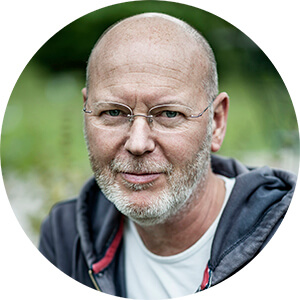Philippe Marchand was born in 1961, self-taught photographer. He lives in Nantes in the West of France. He collaborates with numerous advertising and illustration agencies where his photographies contribute to the promotion of renowned brands.
He is also developing a personal work on the link between man and the sea. We find in the pictures he brings back from his hikes all the Power and the magic of the places he goes through. Its aesthetic approach, the technical constraints it imposes on itself contribute to the creation of a singular photographic universe and resolutely personal.
This award-winning work is regularly published in the international press.
About The Man and the Sea
"The sea is present in everyone's imagination, it means dream and adventure, but also mystery and fear.
What I am trying to develop through the link that unites man with the sea concerns the emotions that the ocean can arouse in each of us, through evocative images. Not the translation of reality. In the manner of the pictorialists whose movement originated at the end of the 19th century and for whom the image must go beyond the reality photographed.
I try to capture the atmosphere of the place, the poetry and the mystery that surrounds it.
The shooting is the first part of a process that also includes a long work in "darkroom" to try to recreate the 'Feeling' of the moment".
Philippe Marchand, photographer of seafarers.
Black, white, shadow, light, what can be seen and what can be guessed, the ocean and those who are close to it. Philippe Marchand opens the world of the sea to us in its most intimate and human aspects. His approach is sensitive, full of nuances and modesty.
Philippe Marchand's photos are like fragments of history. He highlights the relationship between the sea and people: how they look at it, how they approach it and the intimacy they share with it through their activities and passions. Man's imprint on the seascape and the ocean's imprint on the lives of men, even in their attitudes and faces. The secret communion between people and the sea.
The artist has opted for the panoramic format and black and white. Facing the ocean, the format imposed itself. The immensity of the sea is exalted, the fragility of men is highlighted. With black and white, more timeless than colour, Philippe shows us the permanence of the places and gestures of the unchanging world of the sea. We have the feeling that time stands still. There is no rush, no run. Life has always had the rhythm of the ocean.
Through a subtle play of contrasts, greys and light, a real "paw stroke" of the photographer, the images are linked together, inseparable, part of a whole, of a universe where Philippe invites us to share his emotions.
The grain, very present, attenuates, coats the real and reinforces the poetic side of the images. The characters are most often from the back or almost from the back, partly hidden by the play of shadows. The gaze is discreet, never really, never completely encompassing them. There is like a mystery in the air, which Philippe lets us "glimpse"...
